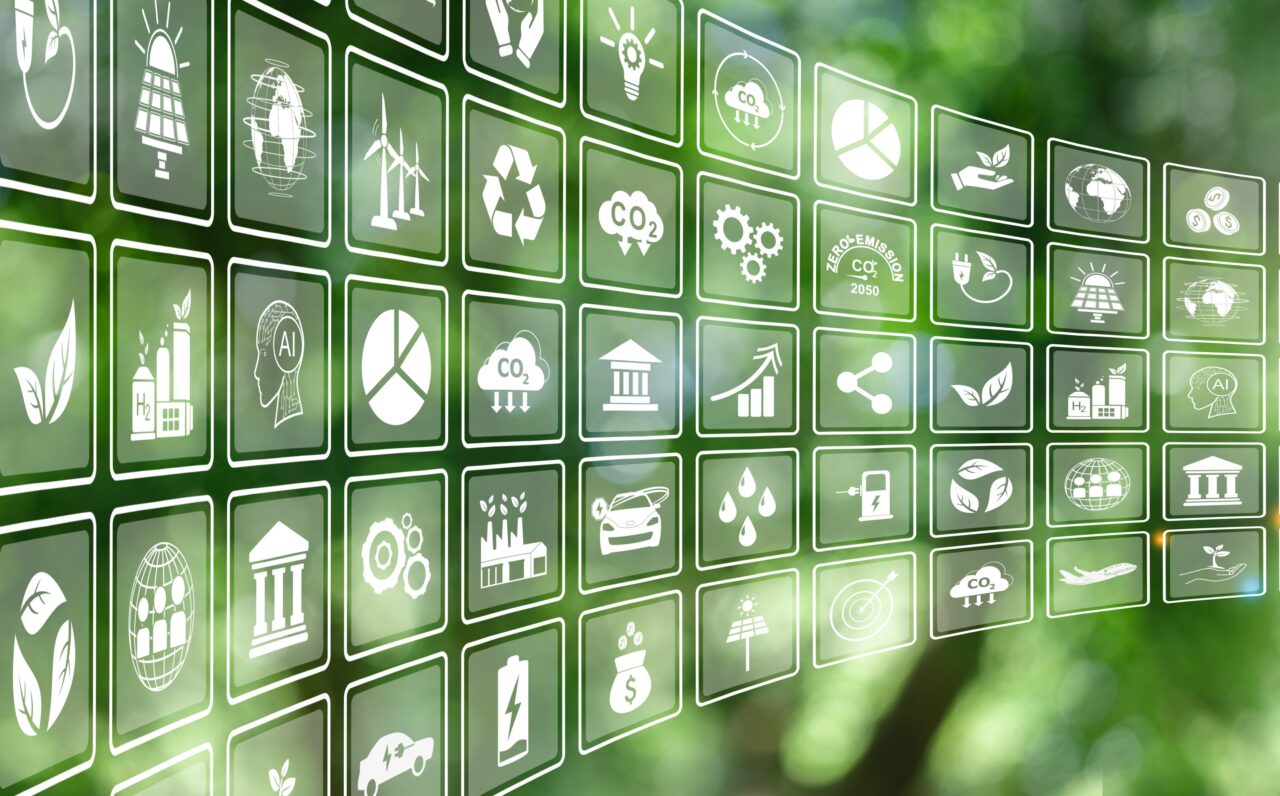AI is creating new opportunities for climate solutions. But whether it can be a force for good in the impact sector will depend upon the decarbonisation of its power systems, says Impax Environmental Markets’ Thomas Morris-Brown.

The development of artificial intelligence (AI) has far-reaching consequences. Already disrupting entire sectors, AI’s rapid growth has also come at a high cost in terms of increased electricity and water consumption, with a direct impact on global aspirations to conserve the earth’s resources. Addressing these issues, as well as the technology itself, is creating manifold opportunities for investors in environmental markets companies.
The scale and scope of the AI revolution
The AI revolution is driven by three key factors: the exponential increase in data availability, advancements in computing power, and recent scientific breakthroughs, particularly in machine learning and AI model architectures.
The explosion of digital data from various sources (including social media, the Internet of Things, and business transactions) has provided the raw material needed to train complex AI models. According to McKinsey Global Institute, the amount of digital data in the world doubles every three years, and other reports estimate it to total 175 zettabytes by 2025.
Advances in graphics processing units (GPUs), technology, cloud computing, and specialised AI hardware have made it possible to train large-scale models that were previously unimaginable.

Equally, innovations in AI, such as transformers and Large Language Models (LLMs) have drastically enhanced its ability to understand and generate realistic human-like content.
For investors in environmental markets, AI is already proving invaluable in enabling climate solutions, including energy efficiency and forecasting, but it is also raising questions about environmental impact.
Energy efficiency
Building energy use is determined by a constantly changing thermal flow, dictated by occupancy and weather. Understanding these dynamics is crucial to the efficient operating of heating, ventilation and air conditioning systems. However, it is difficult to observe directly. AI tools can help simulate how building occupancy, structure, design and the weather interact to affect thermal flow and predict how it may change.
In manufacturing, AI is already used in robotics and predictive maintenance software to reduce operational downtime, maximising resource efficiency. Meanwhile, in transport, AI is used to optimise routing and operate autonomous vehicles.
AI is also helping to develop more efficient clean technologies and reduce the impact of existing technologies.
Forecasting
AI is proving particularly powerful in forecasting the behaviour of complex systems. In weather forecasting, AI models have proven more accurate than supercomputers and operate in a fraction of the time. These capabilities can provide life-saving advanced warnings ahead of extreme weather events.
Such forecasting also has applications across the economy, particularly in improving agricultural productivity. In the long-term, AI models can help better predict the impacts of climate change, ultimately guiding decisions on adaptation-related investments.
Meeting the resource efficiency challenge
However, the benefits promised by AI must be weighed against its environmental impacts – specifically the carbon emissions associated with its energy use and the water required for fabrication and cooling. A search using AI takes 10 times the computing power, and therefore electricity, as a conventional internet search.
Given this, the International Energy Agency projects that data centre energy consumption is set to double between 2022 and 2026 to 1,000 TWh, roughly equivalent to the entire energy consumption of Japan.
Industry is responding to this resource efficiency challenge by building hyperscale data centres. At the same time, continued innovation in energy efficiency and chip design will be critical as AI’s computational demands continue to grow.
On top of its energy consumption, AI is a thirsty business: its data centres need cooling, fabrication sites are water-intensive (often with low recycle rates due to their need for high purity standards or for cost reasons), and many US makers use thermoelectric plants for power. As annual water usage increases, we expect demand for water-efficient technologies to increase commensurately. New cooling technologies, such as liquid cooling or immersion cooling, will be essential to manage the heat generated by dense computing environments, particularly as GPU racks become larger.
What may happen next?
AI is increasingly being used to optimise the integration of renewable energy sources into the grid. Research into advanced materials, such as graphene-based cooling systems, could lead to more efficient heat dissipation in data centres, reducing the overall energy footprint of AI operations.
More broadly, we believe LLMs will become more prevalent in real-world applications, ranging from customer service and content creation to more complex tasks in finance, healthcare, and manufacturing.
AI will also play an increasingly critical role in robotics, enabling more sophisticated automation in industries like manufacturing, logistics and healthcare, driving productivity gains and opening new markets.
Conclusion
AI promises to make a significant contribution to developing the materials, technologies and business models we will need to put the global economy on a sustainable footing. It is also likely to help drive innovative resource efficiency, as sector leaders reward chip makers and data centre operators whose products and services use less energy and water.
Ultimately, however, the AI sector will depend upon the decarbonisation of power systems if its relentlessly expanding demand for power is to be met without a major climate impact.
Thomas Morris-Brown is a portfolio specialist at Impax Environmental Markets.






